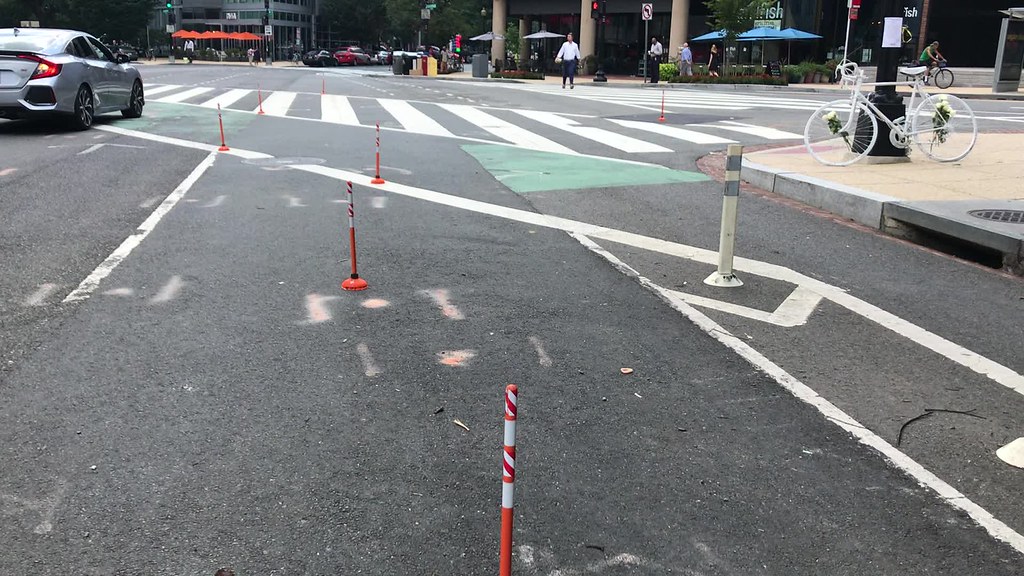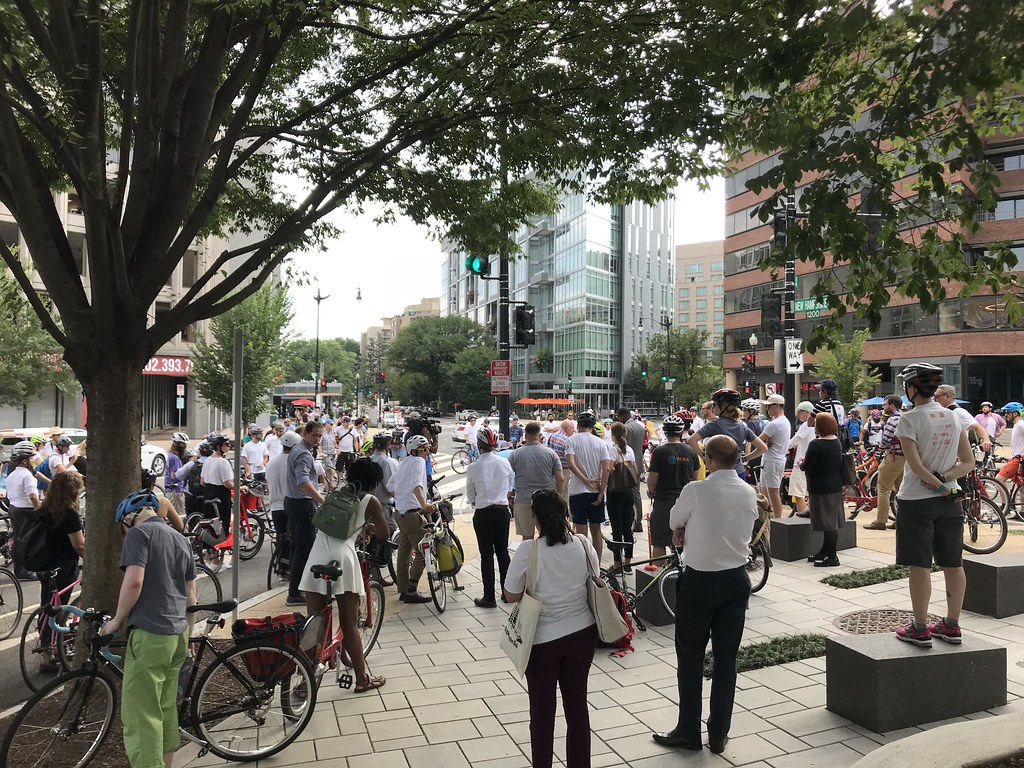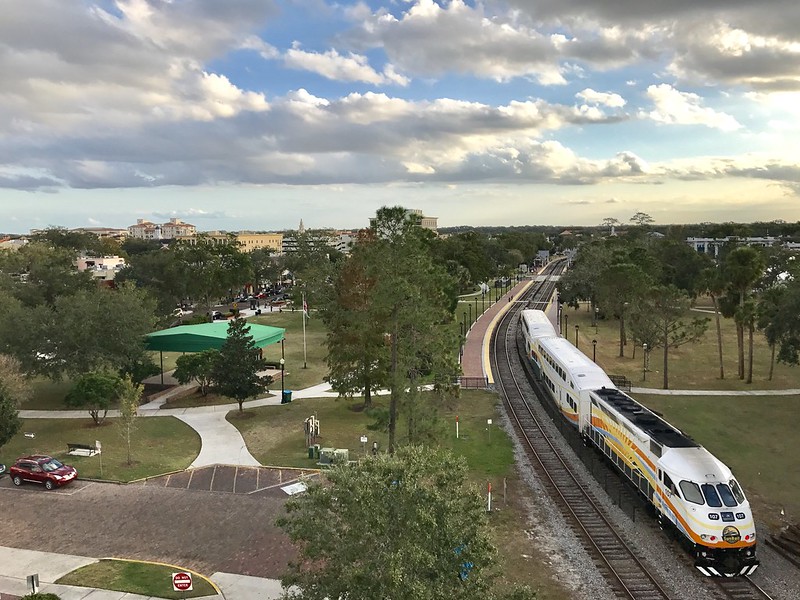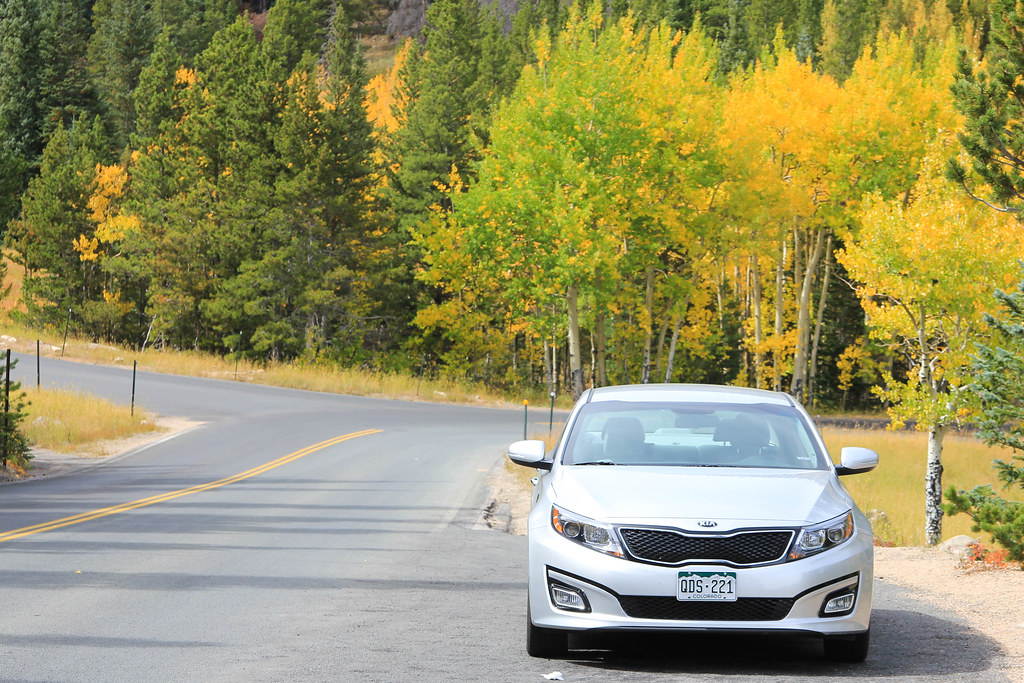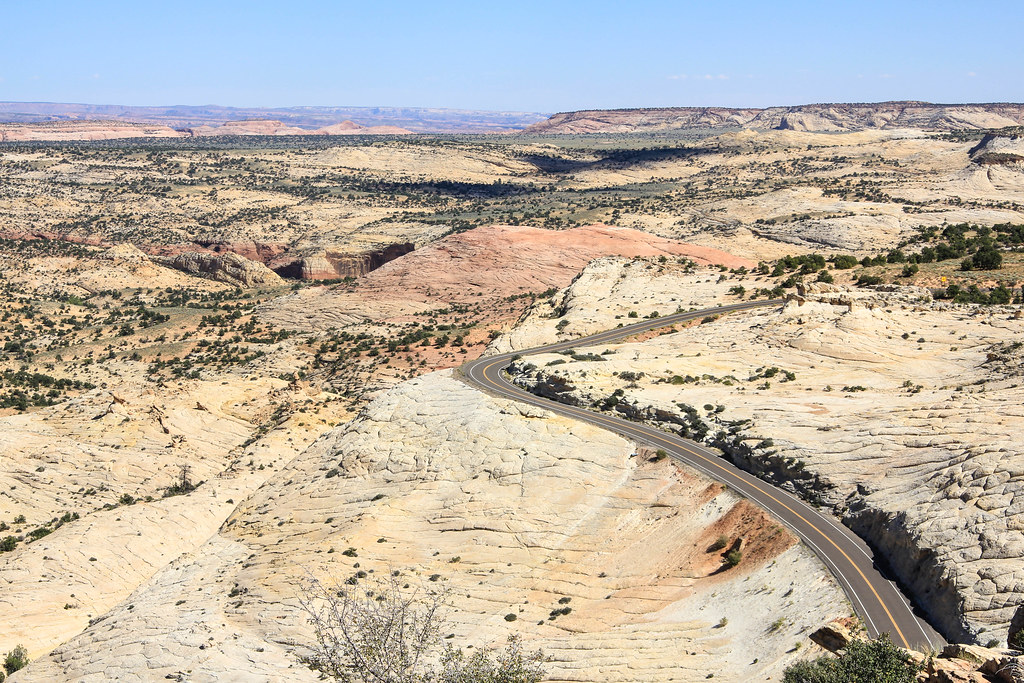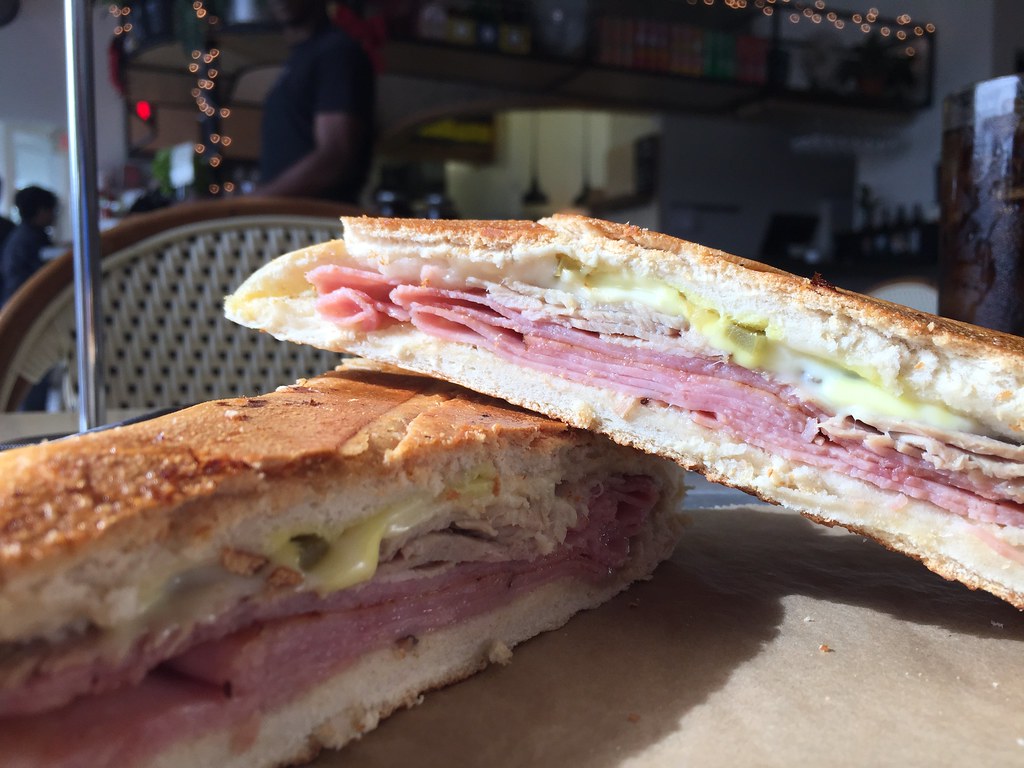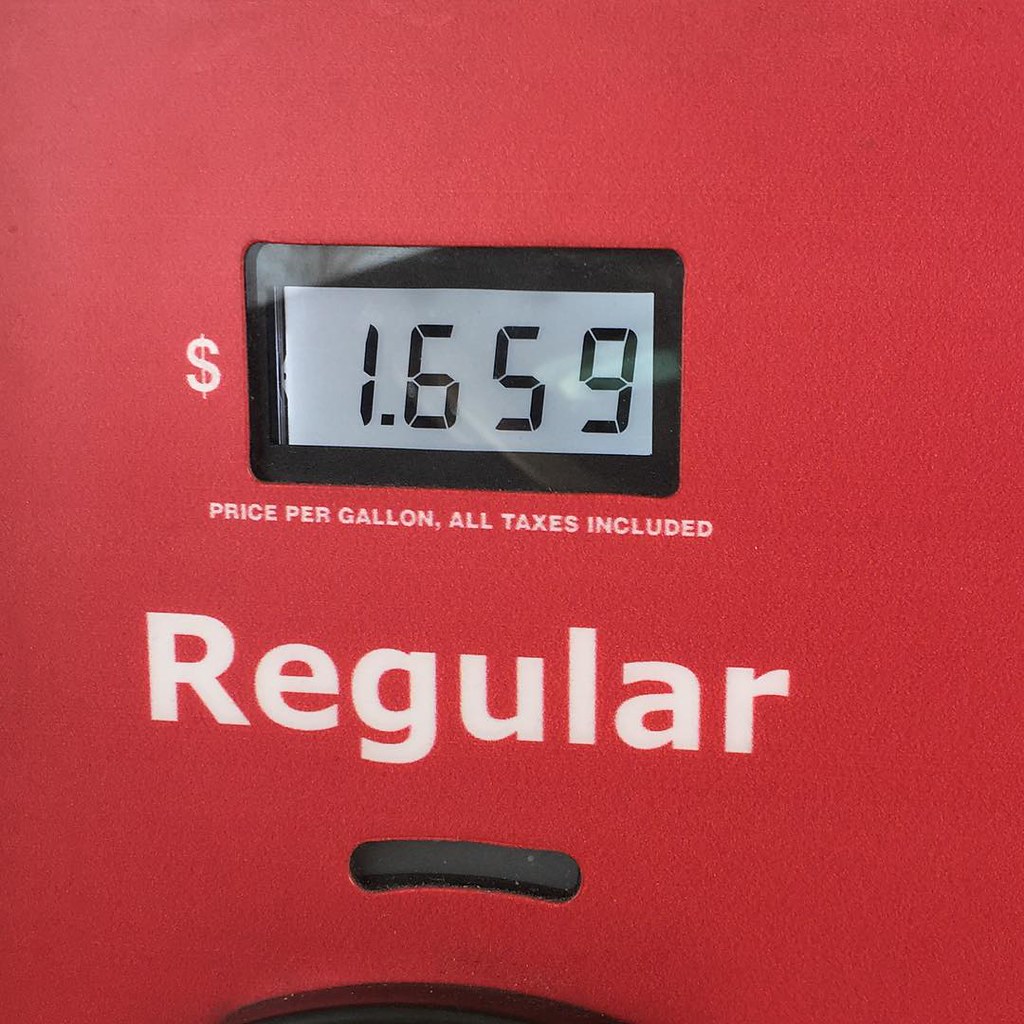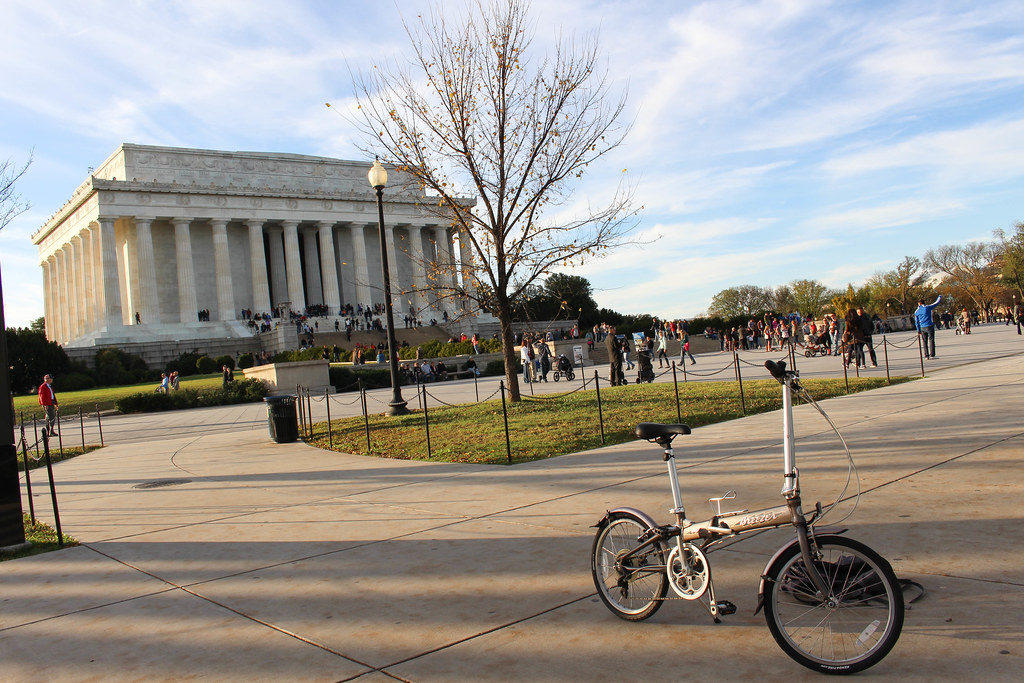“A tragedy,” you hear on the news but when you encounter real grief it’s almost impossible to process. You look away from the mother alone in her pain. She lost her son doing something that should be safe – riding an electric scooter in Washington, DC.
And here she was, days after his death, on the spot where he was killed, as cars honked and drivers cursed.
This was the scene at the memorial ride for Carlos Sanchez-Martin, who was run over by an SUV in a Dupont Circle crosswalk. A white ghost scooter was erected to memorialize him, placed at the spot where he died. We then occupied the street for ten minutes, placing our bikes and our bodies on the asphalt for safe streets.
Drivers couldn’t wait ten minutes. Someone died here and they couldn’t wait ten minutes. They honked and honked and a couple even got out of their cars to confront us, a situation thankfully defused by the Metropolitan Police Department.
Ten minutes. Drivers won’t even give ten minutes for someone that they killed. This is why we need safe streets in the nation’s capital.
After the ten minutes were up, we left the intersection. Drivers poured through, nearly hitting people in the same crosswalk where Carlos Sanchez-Martin was killed. Drivers ran red lights despite the presence of uniformed officers. No tickets were issued.
Rachel Maisler organized the memorial ride. It has become her sad duty to coordinate these events, having brought mourners together for cyclist deaths on H Street and M Street.
And there will be another one, on Thursday, for Thomas A. Hollowell, who was hit by a red-light runner at 12th and Constitution, just off the National Mall.
If you’re murdered by a gun in this city, the police flood the neighborhood. Lights are put up. Squad cars are posted on corners to reassure people that they’re safe.
Someone died at the intersection and drivers still run red lights here. This is what failure looks like @DDOTDC @MayorBowser #VisionZero #bikeDC pic.twitter.com/czoJqiPOVP
— Joe Flood (@joeflood) September 25, 2018
But if you’re a murdered by a car, nothing is done. I visited 12th and Pennsylvania the day after Hollowell’s death and cars were still running red lights. A more enlightened city would make physical changes to the intersection to make it safer and crackdown on red light runners.
But not the District Department of Transportation (DDOT). Safety is not a priority for this unresponsive bureaucracy.
At the memorial for Carlos Sanchez-Martin, a man sat down in the street. This wasn’t planned – no one even knew who he was. He sat down in front of four lanes of traffic with his scooter next to him.
DDOT does so little to stop rampaging drivers that ordinary citizens are willing to put their bodies on the line for safe streets.
The memorial rides are grassroots affairs. Organized by Rachel Maisler, they have forced the city to make changes that keep people safe, like removing parking spaces on the M St bike lane. Negative media coverage is the only thing that DDOT responds to.
The memorial ride for Thomas Hollowell is Thursday 5:30 PM at Farragut Square. People on bikes, scooters, rollerblades or even just walking – anyone who believes in safe streets is welcome. Wear white. It will be a silent procession to where Hollowell lost his life. Follow Rachel Maisler on Twitter for more details.



